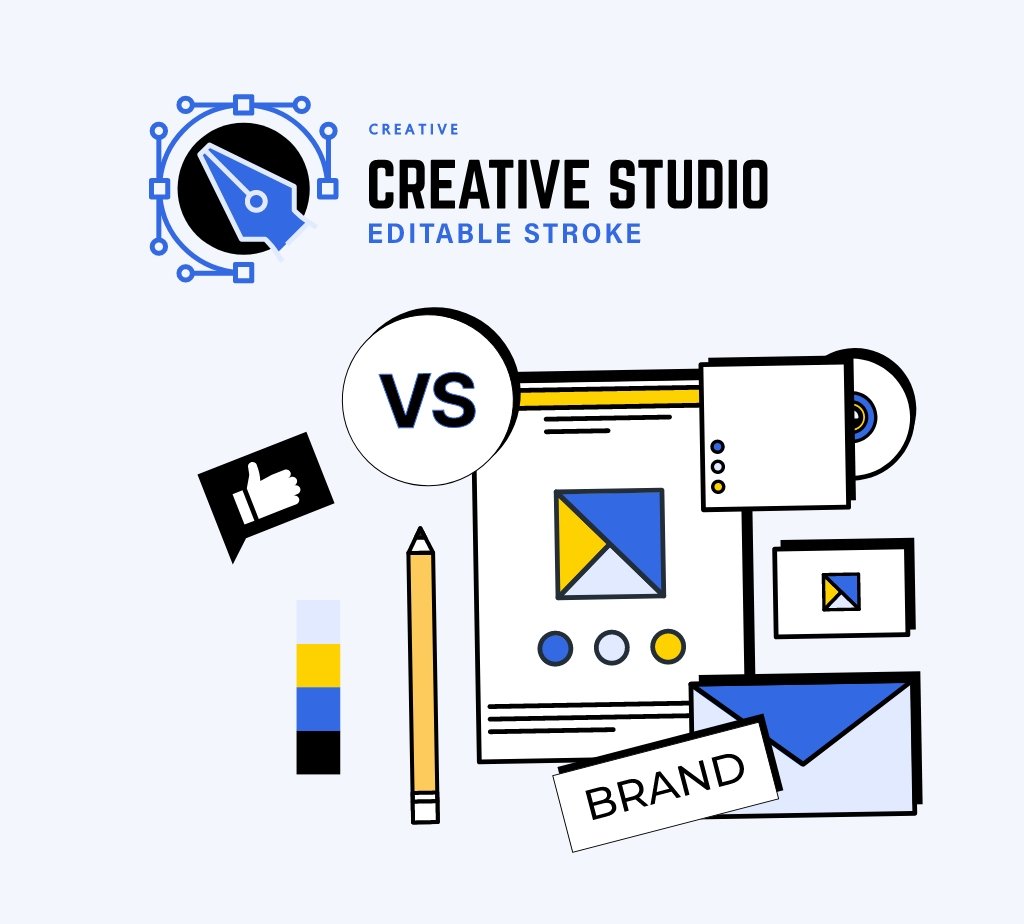Discover Comparison, Benefits & Migration from Wix to WordPress
In today’s rapidly evolving digital landscape, where online presence is paramount, it is...

Branding is a comprehensive strategy that encompasses various elements to shape the perception and identity of a company or product. It goes beyond a logo and involves a range of factors that influence how a brand is perceived by its audience. These strategies include:
The range of products or services offered by a brand plays a crucial role in shaping its identity and positioning in the market.
The design and presentation of product packaging can contribute to the overall brand image and influence consumer perception.
The materials used in production, as well as the ethical and sustainable business practices followed by a brand, contribute to its overall image and reputation.
The pricing strategy employed by a brand can position it as either high-end, affordable, or value-oriented, catering to specific target markets.
A brand’s mission statement and core values communicate its purpose, guiding principles, and the underlying message it wants to convey to its audience.
The choice of colors, typography, and visual elements used in websites, stores, and other brand materials is carefully selected to align with the brand’s identity and evoke specific emotions.
The style, language, and tone used in advertising, social media posts, website copy, blogs, and other forms of communication reflect the brand’s personality and engage its target audience.
Memorable mascots and catchy slogans can contribute to brand recognition and create a lasting impression in the minds of consumers.
The overall experience customers have while interacting with a brand, both online and offline, shapes their perception and influences their level of satisfaction and loyalty.
The ambiance, layout, and customer service provided in physical retail spaces contribute to the overall brand experience and impact consumer perception.
The quality of customer service, including responsiveness, helpfulness, and problem-solving capabilities, reflects a brand’s commitment to customer satisfaction and can significantly impact brand loyalty.
Collaborations with influential individuals or industry experts can amplify brand messaging and increase its reach and credibility.
The values, work environment, and internal practices within a company contribute to its overall brand image and can attract like-minded employees and customers.
The policies and practices related to sales, discounts, refunds, and warranties affect the overall customer experience and shape brand perception.
Strategic promotional activities, such as advertising campaigns, partnerships, and sponsorships, help create brand awareness and enhance brand visibility.
A logo is a visual representation of a brand that serves as a unique identifier. It is a graphic symbol, mark, or emblem that encapsulates the essence of a brand’s identity. Here’s why a well-designed logo is so important for branding purposes:
A well-designed logo allows people to quickly identify and recall your brand. It serves as a visual cue that triggers recognition and connects consumers to your brand.
A logo creates consistency over different communication channels. Whether it’s on your website, social media profiles, or physical merchandise, a logo ensures visual coherence and reinforces brand recognition.
It is part of your brand identity. A logo is a central component of your brand’s visual identity system, which includes colors, typography, and other design elements that collectively represent your brand’s personality.
A logo fosters a professional image and raises expectations. A professionally designed logo conveys credibility, trustworthiness, and competence, setting high expectations for the brand’s products or services.
It distinguishes your brand from the competition. A unique and well-crafted logo helps your brand stand out in a crowded marketplace, making it memorable and easily recognizable.
A logo can facilitate an emotional connection with your stakeholders and boost brand loyalty. When a logo resonates with your target audience on an emotional level, it creates a sense of affinity and fosters long-term loyalty.
While a logo is an integral part of branding, it is not synonymous with branding itself. Branding encompasses a broader set of strategies and elements that work together to shape the overall perception and identity of a brand. A logo is just one visual component of branding, representing the brand visually but not capturing the entirety of its essence.
The decision of whether to design a logo or establish branding first can vary. Some businesses may choose to develop their branding strategies before designing a logo, as it allows for a more comprehensive understanding of the brand’s values, target audience, and positioning. Others may start with a logo and then build their branding elements around it. Ultimately, it depends on the specific needs and goals of the brand.
While logo design and branding are distinct elements, they are deeply interconnected. A logo is an essential visual representation of a brand, while branding encompasses the strategies, values, and elements that shape the brand’s overall identity. Both work together to create a cohesive and impactful brand image.
Logo design and branding are interconnected components of a brand’s identity. While a logo serves as a visual identifier, branding encompasses a range of strategies and elements that shape the perception and identity of a brand. Understanding the distinctions and synergies between logo design and branding is crucial for creating a strong and impactful brand presence in the market.
If you like to know more about Logo Design vs. Branding reach out to us by using our website https://www.nexovah.com/ or email us support@nexovah.com